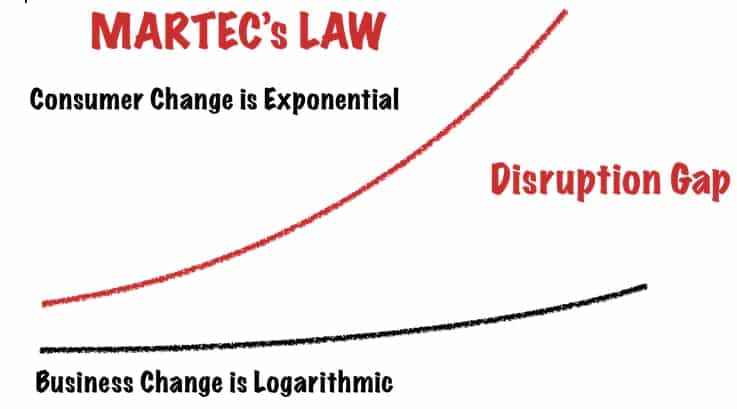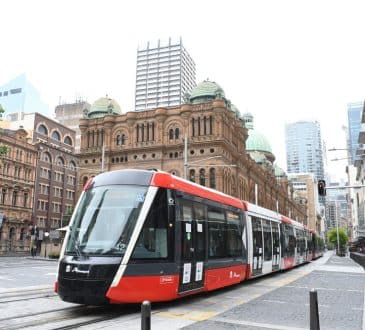Imagine it is 2025 – How’s Your Customer Experience?

What will customers expect and encounter when they interact with you and your business in 2025?
I know that the question is asking about a distant horizon line, but it wasn’t long ago that 2020 seemed like it was forever away.
As a consultant to Fortune 500 companies, I have had the privilege of asking these types of questions to leaders who understand that they can’t wait for the future to unfold – they must create it. In my recent book about Airbnb (The Airbnb Way), I highlight how in 2007 the company’s founders went from trying to make rent for their San Francisco apartment to ultimately create a company that is valued at somewhere around 38 billion dollars today. Those founders never sought to be a travel industry disruptor, they simply focused on trends and unmet customer needs.
To appreciate the importance of stepping into the likely future perspective of your key customers, let’s take a moment to revisit Martec’s law.
As you likely know, Martec’s law can be depicted as follows:
These days much of consumer change is fueled by technological breakthroughs and innovative service standards (think iPhone or Amazon’s “just walk out technology”). If a company fails to consider behavior trends, customer technology adoption, emerging technology trends, and other social advancements, the business can improve a customer experience that quickly becomes irrelevant.
When conducting optimal future journey mapping, my team and I often start by collecting consumer trend data (across industries and specific to a sector), establish a future point in time (for example 2025), and incorporate insights specific to the target segment being considered. We saturate cross-functional teams with this customer knowledge and ask them to assume the psychographics and demographics of their core personas.
We then walk these cross-functional teams through the likely desired future state experiences of each persona group (breaking the bounds of existing processes and offerings). We restrict participants to using “I statements” and speak in the voice of the core customer of the future.
Enough about the process, let’s talk about the actual benefits of optimal customer journey visioning. Starbucks (a company with whom I’ve worked and about whom I’ve written two books – The Starbucks Experience, and Leading the Starbucks Way) has done its share of optimal customer journey mapping and in 2019 announced they were expanding on test and learns conducted in 20 U.S. cities with Uber Eats. Here’s that announcement:
“By partnering with Uber Eats, Starbucks is leveraging the expertise of the largest global delivery service outside of China while extending the potential customer base beyond those who currently include Starbucks as part of their morning or afternoon routines. Through the agreement, the companies will collaborate on innovation and technology integration. Starbucks and Uber Eats will continue to focus on delivery packaging, in-store operations, and a quick order-to-door delivery window.”
Ultimately, Starbucks is positioning itself for a long-term future where its core customer base won’t enter the doors of a Starbucks store. Can you imagine that world?
More important, what are you imagining about the optimal future state of your core customer segments?
Harvard Professor and guru on change management John Kotter observes “the rate of change is not going to slow down anytime soon. If anything, competition in most industries will probably speed up even more in the next few decades.”
With that vision, we will need to anticipate customer wants, needs, lifestyles and desires. We can’t wait to react. If we do, we will perish instead of soar.
To what heights will you soar in 2025?
Bring the best of the CEOWORLD magazine's global journalism to audiences in the United States and around the world. - Add CEOWORLD magazine to your Google News feed.
Follow CEOWORLD magazine headlines on: Google News, LinkedIn, Twitter, and Facebook.
Copyright 2025 The CEOWORLD magazine. All rights reserved. This material (and any extract from it) must not be copied, redistributed or placed on any website, without CEOWORLD magazine' prior written consent. For media queries, please contact: info@ceoworld.biz









